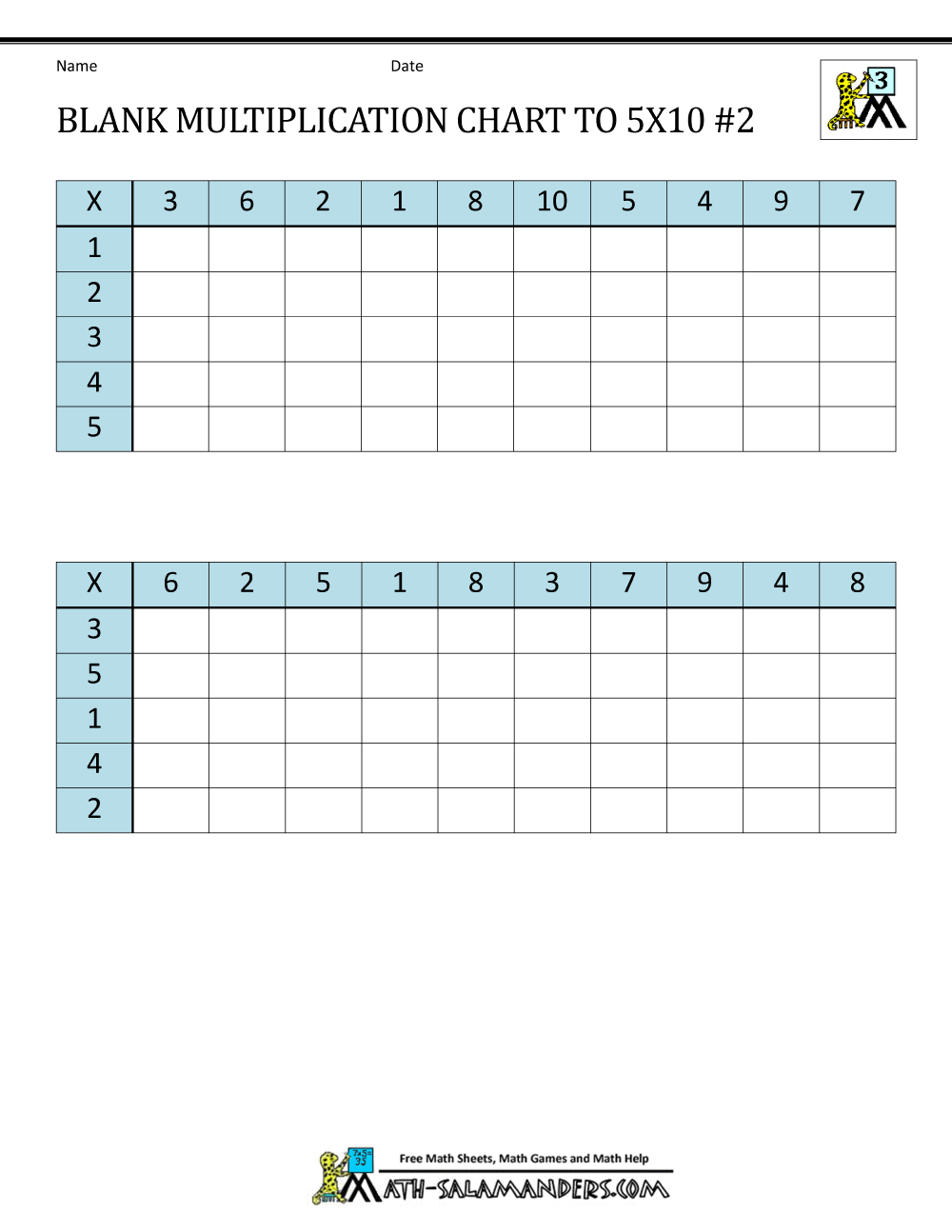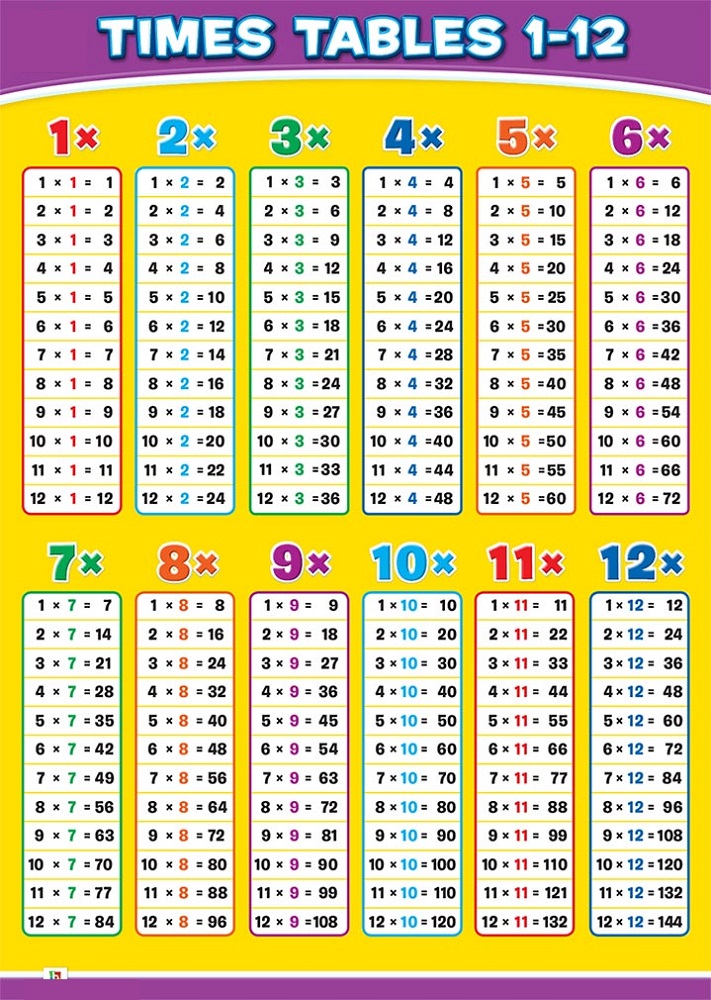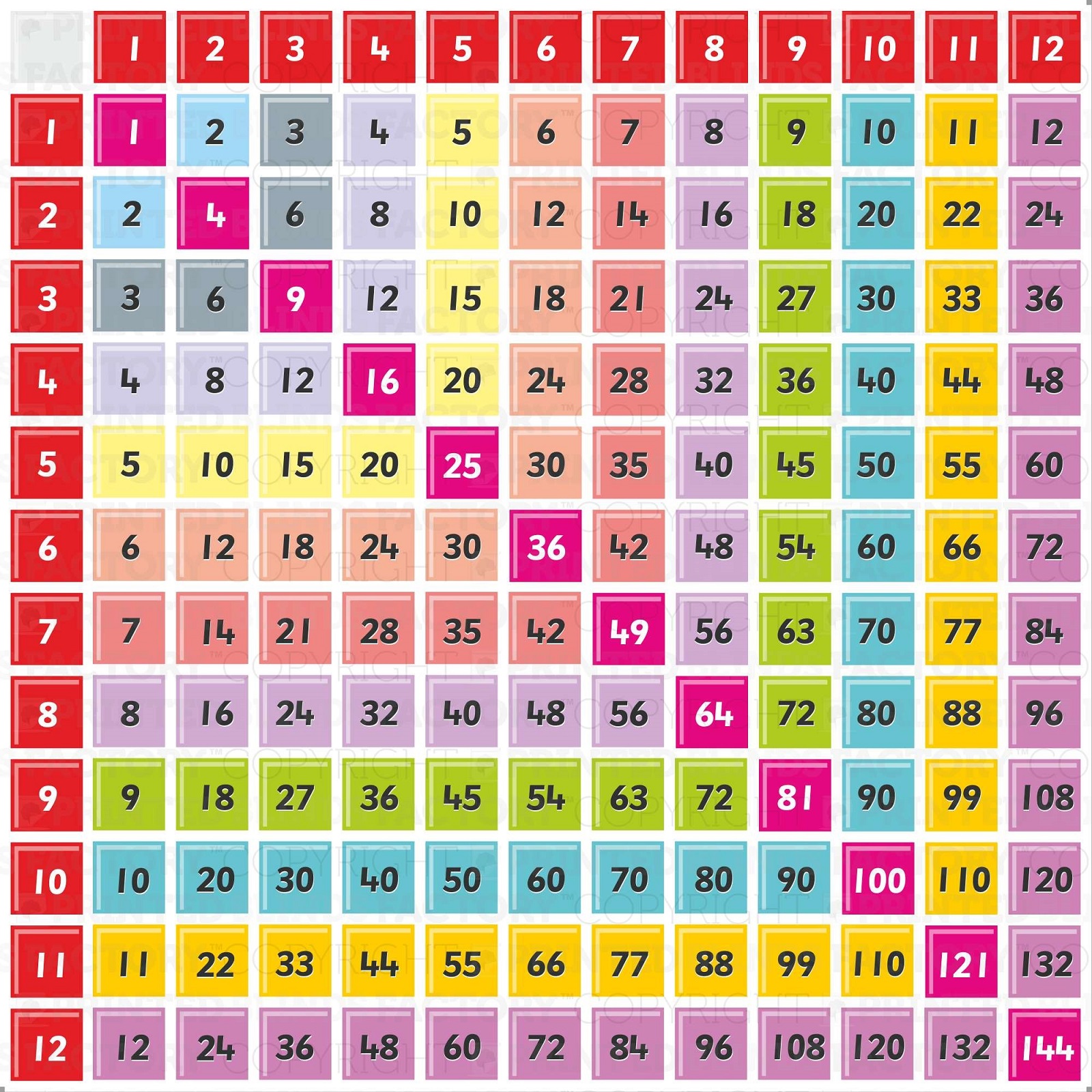

If you do 5 x 7 first and then add 1 x 7 it is suddenly easier to answer. One example of this is 6 x 7, which is often said to be tricky. What also often helps is to use the tables you know well for answering the sums in the more difficult tables. Switching the multiplication sum around makes it easier to answer. For example 4 x 9 is easier to work out than 9 x 4. There are a few tricks which make it easier to learn the tables and continue to master them, such as putting the smallest number first, which makes it easier for many children to answer correctly. Not every child finds it easy to learn all the tables, so it is a good idea to keep on practicing them regularly after you learned them. The 6 times table, 7 times table, 8 times table, 9 times table, 11 times table, 12 times table and of course all the tables in random order are the next step.

The 1 times table, 2 times table, 3 times table, 4 times table, 5 times table and 10 times table are the first times tables to be learned.

Here you can find additional information about practicing multiplication tables at primary school. The game element in the times tables games make it even more fun learn.
Times tables multiplication free#
Learn the multiplication tables in an interactive way with the free math multiplication learning games for 2rd, 3th, 4th and 5th grade. For the big tables diploma you are given 40 questions which include all the tables from 1 to 12. Your little diploma shows you can do the 1,2,3,4,5 and 10 times tables. The little diploma is made up of 30 questions. On the tables diploma the questions are a bit quicker than on the speed test, but if you get all of them right you will get your tables diploma. The speed test is good practice for getting your tables diploma. This will help you learn all of your tables. If you make a mistake, you came see what the right answer is at the end of the test. Once you have got the hang of a number of tables you can select the speed test and choose the tables you want to practice getting quicker at. If you have forgotten any answers, just go back to the 'all tables in sequence' page and practice them again thoroughly before trying again. First you can practice the multiplication facts in sequence and once you have got the hang of that you can practice all the sums in random order for each table.

A quick search on Amazon shows an array of options.Choose the table you want to practice from the following. If you don’t have one, you can order one online for less than 10 dollars. No matter how many times you cover multiplication, it’s always a good idea to have a physical copy of the table available in your classroom. To help with memorization, keep visual materials on hand in your classroom. Some teachers will include a few harder problems for a bonus or to identify high-achieving students. Including more challenging problems as a bonus will help you to gauge high-achieving students. Depending on your preference, you may also cover 11 and 12. Once your students master 0-3, proceed to 4-7, and then 8-10. Memorize the facts in a strategic order.If you wish, take advantage of peer learning for students who are struggling. Find a rhythm that works well in your classroom. Give students time to practice the multiplication facts.Introduce new multiplication facts one by one, gradually and incrementally opening the concept to the more advanced steps of multiplying by 2, 3, 4 and so on.Encourage students and set time for them to practice verbally or in writing.As you continue your lesson, consider following these rules: While there are many approaches to memorizing the multiplication chart, recall the examples above - the “easy” numbers - as a good starting point.


 0 kommentar(er)
0 kommentar(er)
